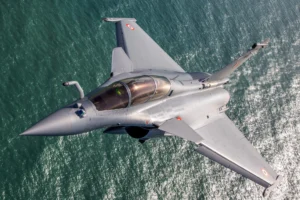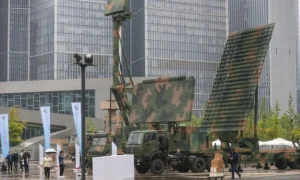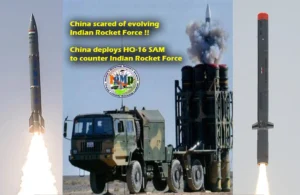Russia is firing Iskander missiles more than once at the same target when Ukrainian military personnel assemble at a ‘hit site’ for rescue operations to cause maximum casualties.
Ukrainians have been left stunned by the tactic, as they are used to expecting only one Iskander strike, allowing them to take corrective battlefield positioning. But a quick successive strike before taking countermeasures has been maximizing casualties, leaving them in shock.
This was stated by leading Russian military correspondent Alexander Kots, who observed the practice based on footage and information about Russia’s frontline operations.
Some Russian Telegram groups, claiming to have personal and familial connections to the military and defense industry, also say Russia can deploy Iskanders since its factories have successfully ramped up production and are far from being hurt by Western sanctions.
Iskander mobile short-range ballistic missiles are battlefield tactical missiles, including some cruise missile variants, that have ranges of around 500 km. “The missile warhead of the complex can destroy enemy command posts, the convoy of equipment, and air defense systems,” according to the Russian Ministry of Defense (RuMoD).

‘Hit A Target More Than Once’
Russian reports quoted Kots, referring to an Iskander strike in the Zaporizhzhia region, which, he said, saw a more “effective use of the Iskander operational-tactical missile systems.” “Previously, these missiles were used singly, but the new tactics of the Russian army involve the simultaneous launch of several missiles at the same target.”

In this case, a second strike at the exact location where an Iskander had landed took Ukrainian soldiers by “surprise,” who had become “accustomed to single attacks.” “First, two missiles were fired, destroying the intended target. After the Ukrainian military approached the explosion site, part of the personnel was hit by the third missile fired,” Kots said.
Expanding further, Kots referred to undisclosed footage, which shows that after “two missiles hit, and the Ukrainians came running to clear the rubble, they were hit by a third.” This capability has been aided by “improved…capabilities of reconnaissance and objective control, which can, while remaining unnoticed by the enemy, observe his actions in the deep rear.”
Kots is possibly referring to the Sirius/Inokhodets-RU, a Medium/High-Altitude Long-Endurance (MALE/HALE)-class combat drone, roughly in the same class as the US’s MQ-9 Reaper. The UAV has enhanced Russia’s standoff Intelligence-Surveillance-Reconnaissance (ISR) and targeting kill-chain capabilities, as discussed in a previous article.
“Usually, only one Iskander was allocated to one target, and this target was considered destroyed. And now everything is changing; I see several Iskanders deployed simultaneously on one target,” Kots added. He also cited an instance where three Iskanders hit an armored vehicle plant in Kharkov/Kharkiv one after the other.
Russian MoD Reports On Iskander Actions
While it is unclear when the above Iskander attacks occurred, the last two publicity materials and videos of the missile in action the RuMoD provided offer some clues. On November 1, it featured the Western Military District’s Iskander Operational-Tactical Missile System (OTRK) that “launched strikes at AFU military infrastructure.”
#Russia is firing #Iskander missiles more than once at the same target when Ukrainian military personnel assemble at a ‘hit site’ for rescue operations to cause maximum casualties. #UkraineRussiaWar pic.twitter.com/SihVKez0bO
— EurAsian Times (@THEEURASIATIMES) November 19, 2023
Staying “many kilometers away from the front line (it undertook) successful launches and neutralized targets serve as evidence.” The “launches,” in the plural, hinted there was more than one Iskander release at the exact location.
The accompanying video also evidenced this. A Transporter-Erector-Launcher (TEL) and a missile carrier come up beside each other, and the former receives a canister carrying the Iskander-K variant. This version is launched from a canister and has a distinct shape from the conical nose of the other Iskander variants. Soon, dusk falls, and two missiles are released from a tree line.
On November 17, it released another video of an Iskander TEL moving into place. It raises the missile from the large hatch and fires it. The RuMoD described this as Russian Iskander units firing at “a camouflaged AFU command post (whose) location was revealed by reconnaissance.”

After receiving the coordinates, the “missile men” advanced to the firing position, deployed the launcher to combat use in “a matter of minutes,” and launched the missile before changing locations.
“The complex is armed with both ballistic and cruise missiles, which put false electronic interference on the approach to the target and are practically invulnerable to enemy air defense systems. Cruise missiles can fly at ultra-low altitudes and contour around terrain. It is impossible to detect them,” the RuMoD said.
Source link








